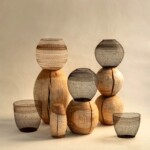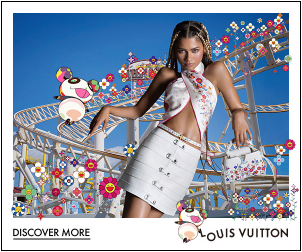When fashion meets dance, the result can either be a collision or a revelation—Gareth Pugh’s designs for Wayne McGregor’s ballet were unequivocally the latter.
Fashion as Architecture in Motion
Gareth Pugh, known for his boundary-pushing silhouettes and experimental textures, has long been a name synonymous with the avant-garde. When tasked with designing costumes for choreographer Wayne McGregor’s latest ballet MADDADDAM, which premiered with The Royal Ballet at the Royal Opera House, the challenge was immense: merge high fashion’s aesthetic audacity with the kinetic demands of contemporary dance. Pugh delivered a collection that felt both otherworldly and perfectly in step with the medium, drawing gasps from the audience not only for its beauty but also for its sheer functionality.
The costumes were architectural yet pliable, their angular shapes bending effortlessly with the dancers’ movements. A standout piece, reminiscent of Pugh’s iconic inflatable designs, saw layers of semi-transparent fabric ripple with each pirouette, creating the illusion of the dancers slicing through space. McGregor’s choreography, typically rooted in the extremes of human capability, was amplified by Pugh’s understanding of proportion and theatricality.
This production was inspired by Margaret Atwood’s speculative dystopian trilogy and included a stellar creative team, with costumes by Pugh complementing the futuristic and unsettling themes of the narrative. Pugh’s work seamlessly integrated with other design elements, including lighting by Lucy Carter and film projections by Ravi Deepres, to create a visually arresting performance.
The Intersection of Choreography and Couture
Where McGregor’s dance vocabulary is sharp, fragmented, and emotionally raw, Pugh’s designs provided a visual counterpoint: sleek, futuristic, and almost alien in their perfection. Yet, the partnership never felt at odds. The angularity of the costumes complemented the precision of the movement, while soft touches—such as diaphanous fabrics that caught the light—imbued the production with unexpected warmth.
The colour palette was another triumph: monochromatic tones of black, white, and metallics dominated, creating a stark, sculptural aesthetic. The absence of distracting hues allowed the audience to focus on the interplay of light, fabric, and motion. These designs didn’t just dress the dancers; they became part of the narrative.
A Seamless Collaboration
Pugh and McGregor are no strangers to bold experimentation, but this partnership felt particularly synergistic. While collaborations between high fashion and ballet often veer into impracticality—exquisite but unwearable—Pugh’s designs struck a delicate balance. They were striking enough to stand as art pieces yet meticulously engineered to support the demands of McGregor’s intricate choreography.
A Visionary Pas de Deux
Gareth Pugh’s work for Wayne McGregor’s ballet proves that when fashion transcends its traditional boundaries, it can elevate another art form entirely. This collaboration didn’t just clothe the dancers; it redefined the stage as a living, breathing canvas. Pugh, it seems, has not just designed for the ballet—he’s danced with it.
Image: ©2024 RBO. Ph Andrej Uspenski










